Sarah Park of Matador Network brings us some of the most dangerous, beautiful, and downright weird wonders of the natural world.
Bioluminescent Red Tide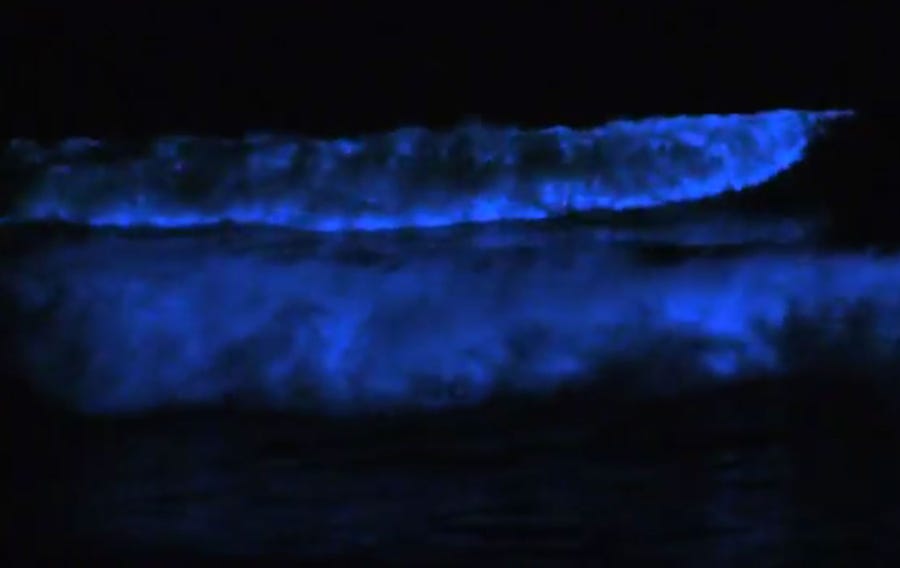
YouTube/LoghanCall
When conditions are just right, ocean phytoplankton reproduce like bunnies, creating a thick, visible layer near the surface. These algae blooms (a.k.a “red tide”) might look disgusting during the day, but in parts of California and other places where the bioluminescent variety of Noctiluca scintillans bloom, red tide nights look out of this world.
This particular variety of phytoplankton glows blue when agitated, transforming the dark ocean into a giant lava lamp. Watch the waves light up as they crash, run across the sand to see the ground glow under your feet, or dive in to be surrounded by the bizarre Timex-y glow. N. scintillans is also the culprit behind the Bioluminescent Bays in Puerto Rico.
Foxfire

Wikimedia Commons
During the late summer, a faint, eerie glow can be seen in forests around the world, where bioluminescent mushrooms grow on moist, rotting bark.
The greatest diversity of foxfire occurs in the tropics, where moist forests encourage fungal growth. The newest varieties of glow-in-the-dark mushrooms were introduced to the world just last year, after being collected from Ribeira Valley Tourist State Park near Sao Paulo, Brazil.
To up your chances of seeing this one, hunt in the forest during its wettest season and move as far as possible from any artificial light sources. And if you happen to see a patch of glowing shrooms, don’t even think about it —they’re not that kind of mushroom.
Fire Rainbow
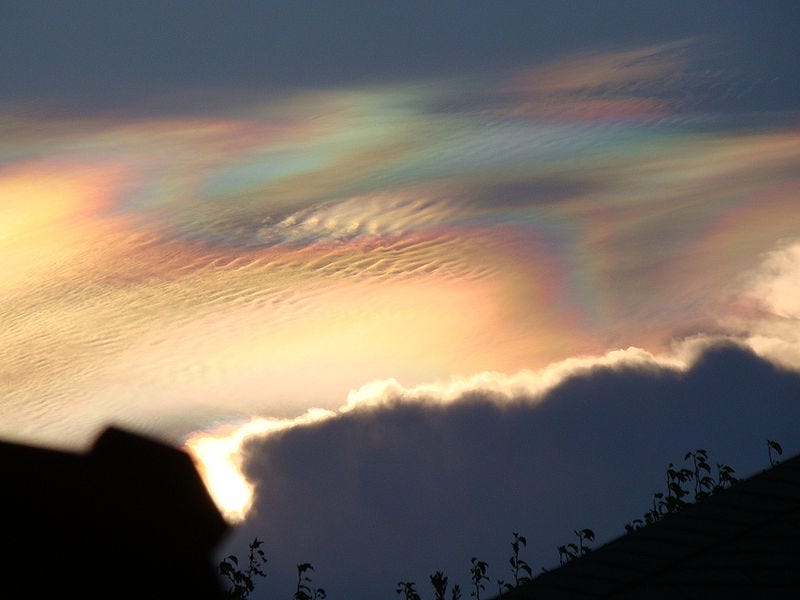
Wikimedia Commons
Another summertime occurrence, fire rainbows appear when sunlight hits frozen ice crystals in high-altitude cirrus clouds. Because the fire rainbow actually involves no rain at all, scientists would rather we refer to this occurrence by its much less fun, but much more accurate title: the circumhorizonal arc.
Since the arc requires both the presence of cirrus clouds and for the sun to be extremely high in the sky, it’s much more likely to be seen at latitudes closer to the equator. Conditions might be right for a fire rainbow in Los Angeles six months out of the year, but in a more northern city like London, that window drops to a mere two months.
Nacreous Clouds

Flickr/Alan R. Light
For those of you a bit farther away from the equator, there’s still plenty to see in the sky. Nacreous clouds (also called mother-of-pearl clouds) are extremely rare, but unmistakeable in the dark hours before dawn or after sunset.
Because of their extremely high altitudes, they reflect sunlight from below the horizon, shining it down brightly, in stark comparison to the regular ol’ dark clouds in the troposphere. The lower stratosphere, where nacreous clouds live, is so dry that it often prevents cloud formation, but the extreme cold of polar winters makes this beautiful phenomenon possible.
Captured best during winter at high latitudes, nacreous clouds have been spotted in Iceland, Alaska, Northern Canada, and very rarely, farther south in England.
Snow Rollers

Wikimedia Commons
Snow rollers are formed when a thick layer of snow falls on top of a layer of ice. If the temperature and wind speed are right, chunks of snow can break loose and start rolling.
As they’re blown along the ground like wintry tumbleweeds, they pick up additional snow along the way. The inner layers are often weaker and less compact, allowing them to be blown easily away by the wind, leaving a large, naturally formed snow donut.
Because of the precise temperature and wind speeds required to create this effect, snow rollers are a rare sight, but have made headlines with their appearances in parts of North America and the UK.
Columnar Basalt
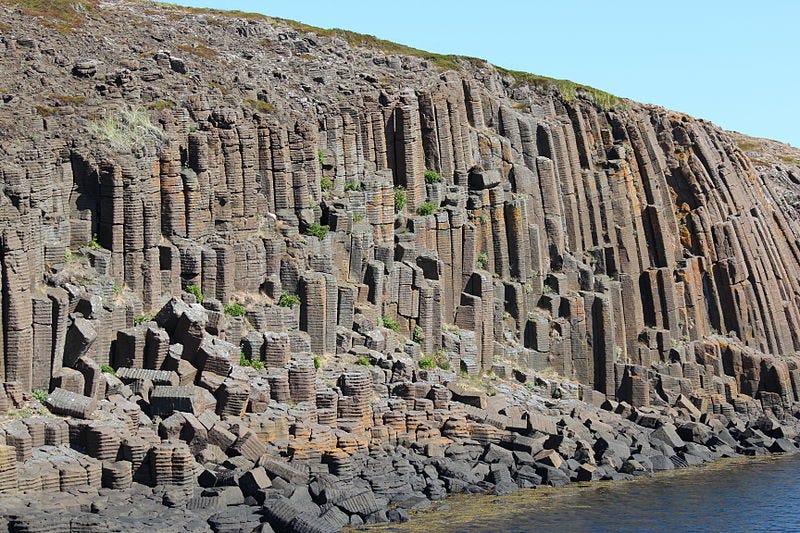
Wikimedia Commons
A natural volcanic formation, columnar basalt has a seemingly man-made appearance. The (mostly) hexagonal columns form naturally as thick lava rapidly cools, contracting and creating cracks in the surface of the new rock. These unusual geological formations can be seen across the globe. Two of the most notable examples include the Giant’s Causeway in Ireland, and Devil’s Postpile in California.Raining Animals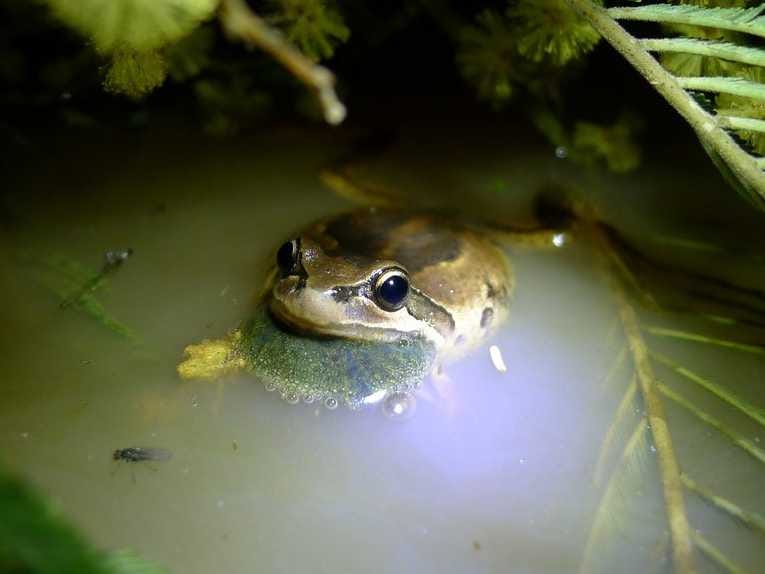
Flickr/John Tann
This phenomenon has been reported in locations worldwide for centuries, with most cases involving fish, frogs, or other small aquatic animals.
Despite being extremely rare and lacking in credible eyewitness accounts, most incidents are explainable. Waterspouts (think tornadoes made of water) are the go-to culprit, as their high winds are capable of lifting small animals out of the water, carrying them far distances before dropping them unceremoniously on your head.
Considering this, I’d recommend heading closer to large bodies of water during an extremely heavy storm to increase odds of bearing witness to this truly bizarre phenomenon. But, seriously, bring a poncho or something.
Asperatus Clouds
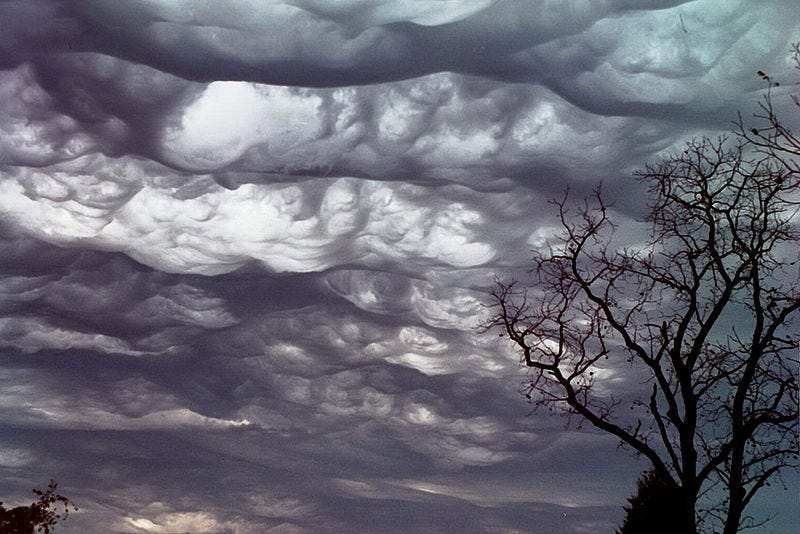
Wikimedia Commons
Asperatus clouds are so rare they managed to escape classification until 2009. Ominous and stormy as they appear, these clouds often break up rather quickly, without producing a storm. As with most other undulating cloud types, these clouds are formed when turbulent winds or colliding air masses whip up the bottoms of the cloud layer into fancy shapes and formations.
More common in the plains of the United States (try Iowa), asperatus clouds are at their weird and swirly best during the morning or midday hours after a thunderstorm.
Green Flash

Flickr/myyorgda
The famed and elusive Green Flash is a rare meteorological phenomenon that occurs at sunset and sunrise. During these times, the sun’s light travels through more of the earth’s atmosphere to reach your eye, creating a prism effect.
Yeah, the explanation is definitely more dull than many of the maritime legends surrounding the phenomenon, but consider yourself very lucky if you’re able to witness this event. To increase your chances, watch the sun set(or rise) over a long and uninterrupted horizon on a very clear day. The ocean horizon works well for this, as will a prairie, or the horizon line while inside an airplane.
The flash lasts only a fraction of a second, so don’t blink!
Sun Dogs
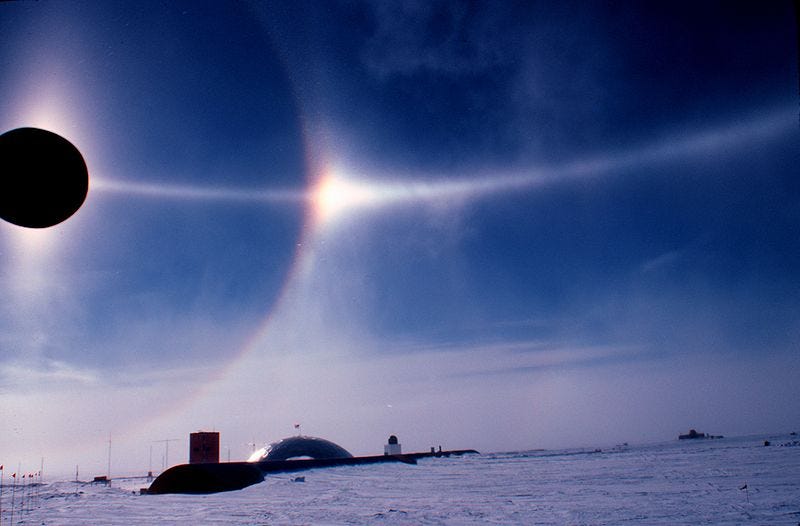
Wikimedia Commons
When the sun is near the horizon and ice crystals are present in the air, look up to see a pair of bright spots sitting on either side of the sun. Always to the right and the left along the horizon line, these dogs loyally follow the sun across the sky.
While this atmospheric phenomenon can occur whenever, wherever, the effect is usually quite subtle. When sunlight passes through cirrus clouds (or other types of ice clouds) at just the right angle, however, these spots can appear as bright as the sun itself. The brightest occur when the sun is low in the sky in colder regions. This photo shows a sun dog at the South Pole.
Double Rainbow
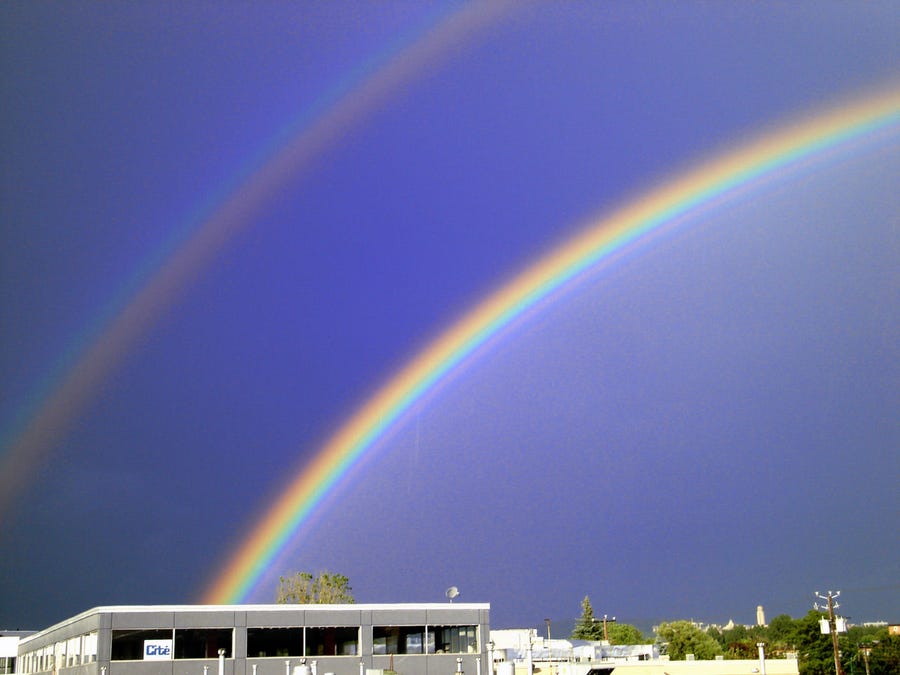
Flickr/Serge Melki
If there were any atmospheric phenomenon that could bring a grown man to tears, it’s this one. So, “WHAT DOES IT MEAN?!?!?!?”
Well, it means pretty much the same thing as a regular rainbow. Only, on occasion, sunlight reflects in a raindrop not once, but twice, creating a secondary rainbow outside of the much brighter primary arc. The best views of this phenomenon occur when the sky is still dark with rainclouds, as the gray background helps the much dimmer colors of the secondary arc appear.
Double rainbow, all the way!
Striped Iceberg
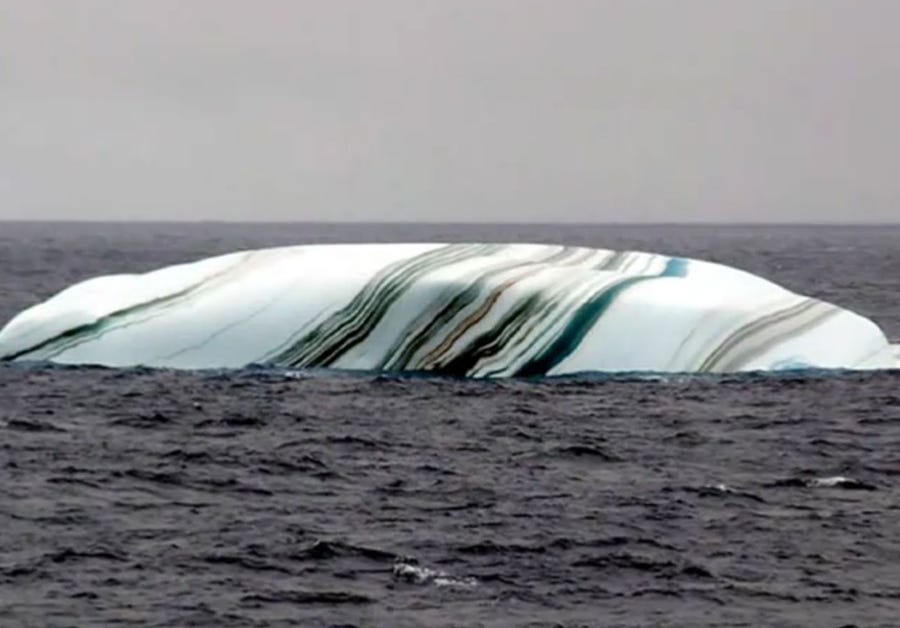
YouTube/Carmem Amelia
Icebergs aren’t exclusively monotone. A few nonconformists come in various colored ᵴtriƥes, standing out against arctic whites and blues.
As water melts and refreezes on an iceberg over time, dirt and other particles can become trapped between new layers of ice, creating multicolored ᵴtriƥes across its surface. A variety of colors can appear. Blue ᵴtriƥes occur when water gets trapped between layers of ice and freezes so quickly that air bubbles cannot form. Once icebergs break off and fall into the ocean, algae or other materials present in the water can create green or yellow ᵴtriƥes.
Up your chances of viewing striped bergs by heading south to Antarctica.
Catatumbo Lightning
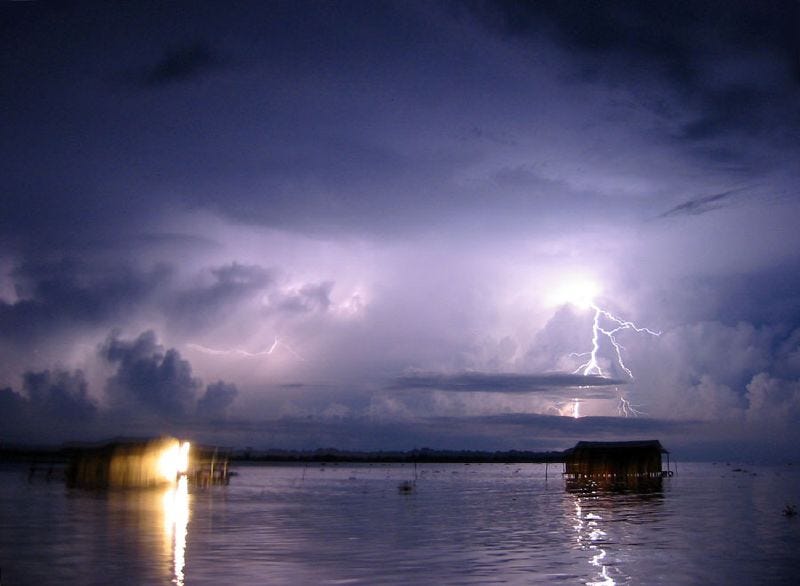
Wikimedia Commons
Still a relatively mysterious occurrence, the Catatumbo lighting in Venezuela is known as the everlasting storm.
The seemingly non-stop cloud-to-cloud lightning can be easily seen from a distance, and has long been celebrated for its ability to assist sailors with navigation. Since the Catatumbo lighting does its thing approximately 140-160 nights per year, your chances of viewing it are quite good. It occurs very specifically in one area—the mouth of the Catatumbo River and around Maracaibo Lake.
Gravity Wave
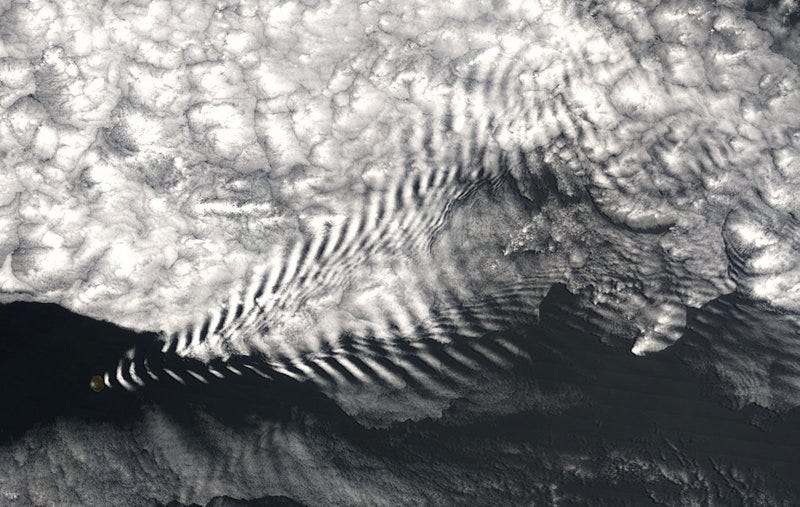
Wikimedia Commons
Waves apparently aren’t restricted to large bodies of water or the stands at sporting events — they can happen, albeit rarely, in the sky as well. When air is pushed up into a more stable layer of atmosphere, it can cause a ripple effect, just like tossing a rock into a pond.
For a gravity wave to occur, there must be a disturbance in the atmosphere, such as an updraft of a thunderstorm. Recent studies indicate that gravity waves have the power to concentrate and intensify tornados, so if you’re lucky (or unlucky) enough to view the undulating cloud formations firsthand, I’d suggest seeking shelter soon after! Iowawould be a good place to start the hunt.
Moeraki Boulders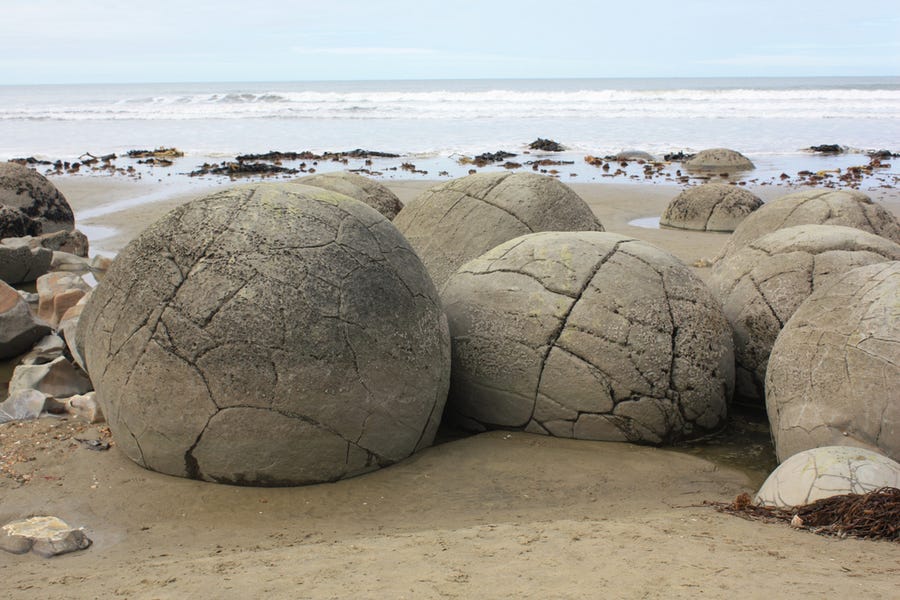 Flickr/jemasmith
Flickr/jemasmith
Known as the Moeraki Boulders, these spherical stones have been naturally excavating themselves one by one from their mudstone beds on the New Zealand coast.
Erosion uncovers these giants, but it isn’t responsible for their spherical shape. Instead, these boulders are said to have been created millions of years ago on the ocean floor in a process similar to the formation of oyster pearls—layers of sediment and material crystallizing around a central core.
Over the course of millions of years, they grew to the immense sizes seen today. The boulders can be found on Koekohe Beach, New Zealand.
oucre: businessinsider.com





